In the Beginning Sies + Höke Galerie, Düsseldorf, 2023
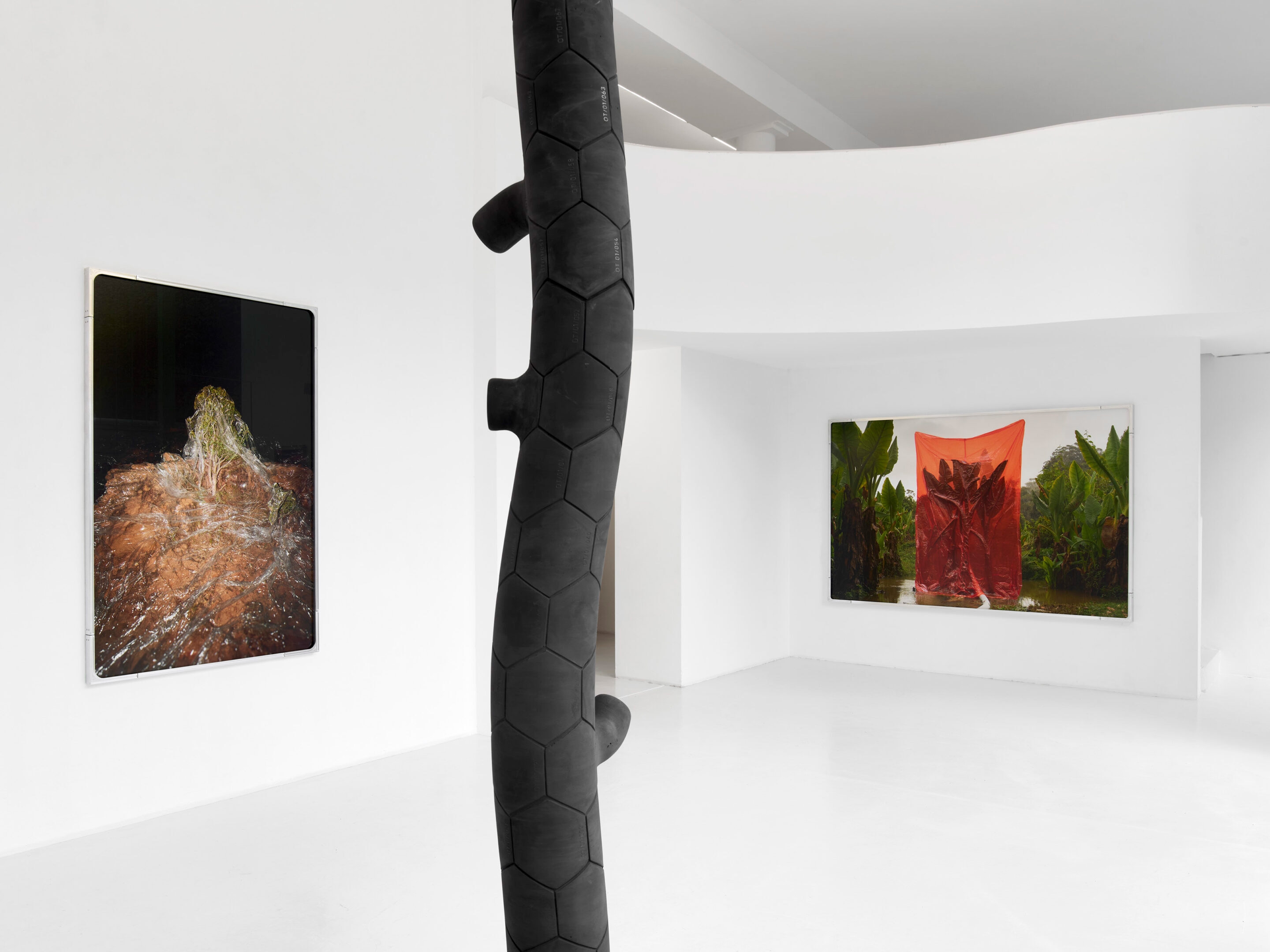
In the Beginning, 2023 | Installation view
In his solo exhibition In the Beginning, Julius von Bismarck presents our familiar surroundings continually in new guises. Whether clad trees or wrapped plants, the often bizarre-looking scenes are clearly the result of human activity. Yet people are only present here in the form of the effects of their actions. The protagonists of the works are plants and entire landscapes in a highly technical world.
As early as 1985, Donna Haraway described in her essay A Cyborg Manifesto how the fusion of machines and living organisms not only produces hybrids, but also the superimposition of social realities and fiction. Human cyborg existence begins with the first items of clothing. It is the moment of origin when humans began to detach themselves from their own environment. Von Bismarck transfers this moment to plants and stages cyborg landscapes that use the progressive technologisation of our environment as a moment of social reflection.
The machine-milled aluminium frames of the photo series We Were All Naked (2023) offer a view of alien worlds as if from a spaceship window. Here, whole areas of land are covered with foil, deprived of the air they need to breathe by a hose. Like a spider’s web, plastic film stretches over stones and small trees, transforming them into an unfamiliar environment. The context of the depopulated scene can hardly be surmised.
In this series produced especially for the exhibition, von Bismarck confronts us with the fact that it is often impossible for non-human beings to adapt quickly enough to the conditions of their environment, changing due to human technologisation. We humans are able to isolate ourselves from our environment, while most other living things perish when they are removed from their ecosystems. The photo series was created in Madagascar, one of earth’s biodiversity hotspots. Analogous to vacuum-packed produce, the artist here wraps living plants in plastic and vacuum-packs them. Indeed, this deprives them of the air they need to breathe. The plants are preserved in their present state and inevitably die. At the same time, the shiny plastic film mirrors our inability to preserve our own environment.
As early as 1985, Donna Haraway described in her essay A Cyborg Manifesto how the fusion of machines and living organisms not only produces hybrids, but also the superimposition of social realities and fiction. Human cyborg existence begins with the first items of clothing. It is the moment of origin when humans began to detach themselves from their own environment. Von Bismarck transfers this moment to plants and stages cyborg landscapes that use the progressive technologisation of our environment as a moment of social reflection.
The machine-milled aluminium frames of the photo series We Were All Naked (2023) offer a view of alien worlds as if from a spaceship window. Here, whole areas of land are covered with foil, deprived of the air they need to breathe by a hose. Like a spider’s web, plastic film stretches over stones and small trees, transforming them into an unfamiliar environment. The context of the depopulated scene can hardly be surmised.
In this series produced especially for the exhibition, von Bismarck confronts us with the fact that it is often impossible for non-human beings to adapt quickly enough to the conditions of their environment, changing due to human technologisation. We humans are able to isolate ourselves from our environment, while most other living things perish when they are removed from their ecosystems. The photo series was created in Madagascar, one of earth’s biodiversity hotspots. Analogous to vacuum-packed produce, the artist here wraps living plants in plastic and vacuum-packs them. Indeed, this deprives them of the air they need to breathe. The plants are preserved in their present state and inevitably die. At the same time, the shiny plastic film mirrors our inability to preserve our own environment.
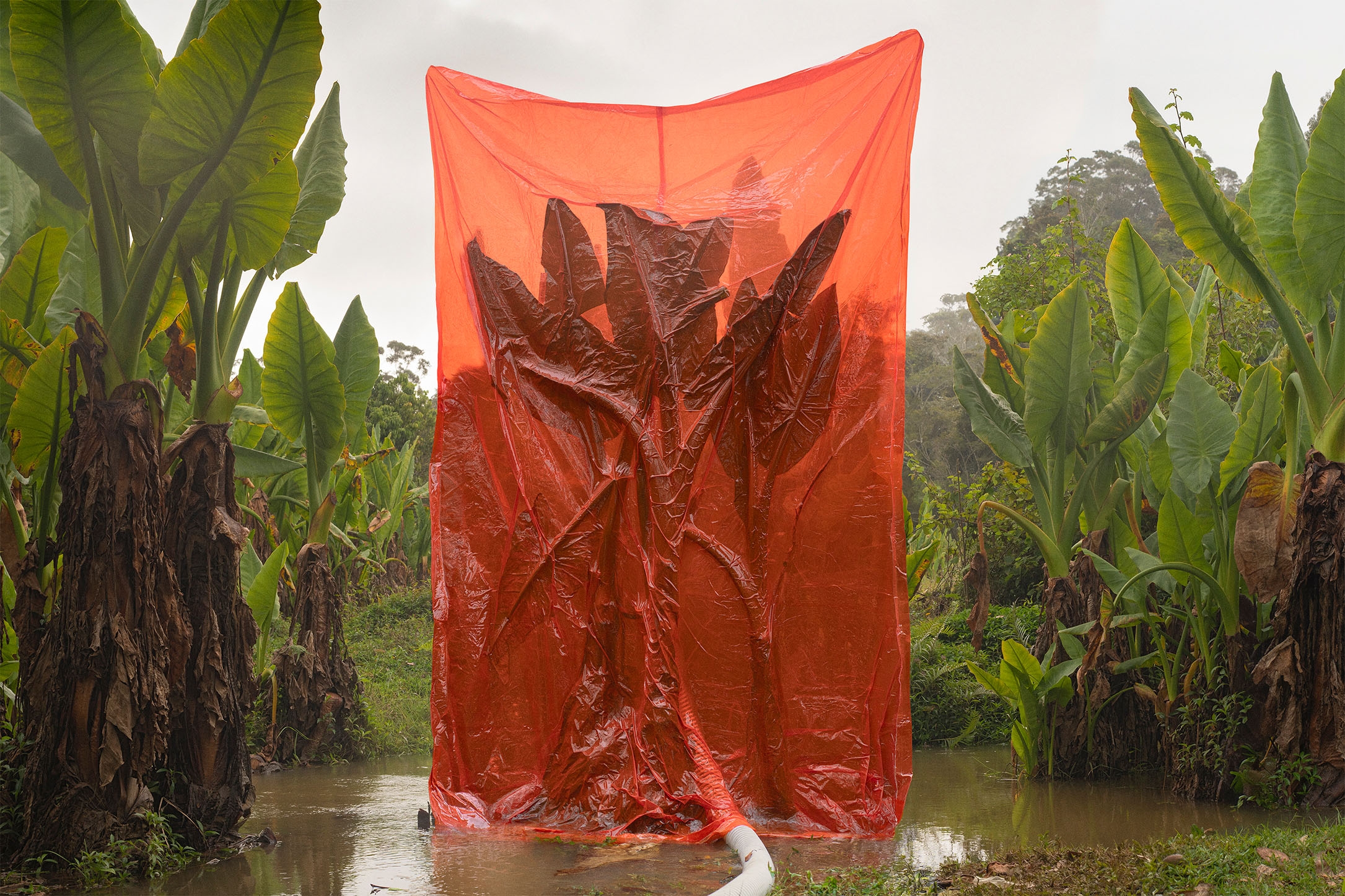
We Were All Naked (Red Elephant Ear), 2023 | Archival pigment print, 147 x 220 cm
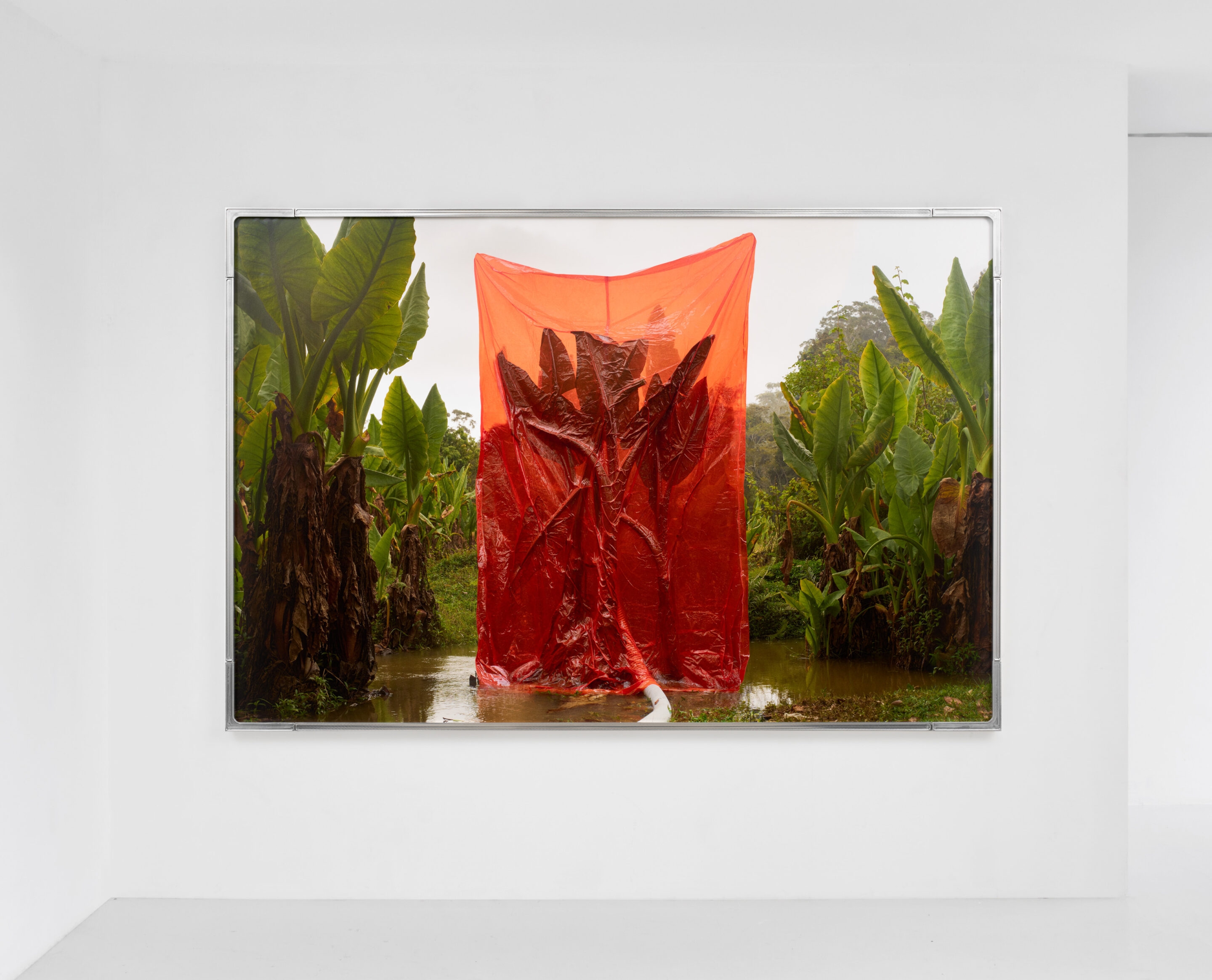
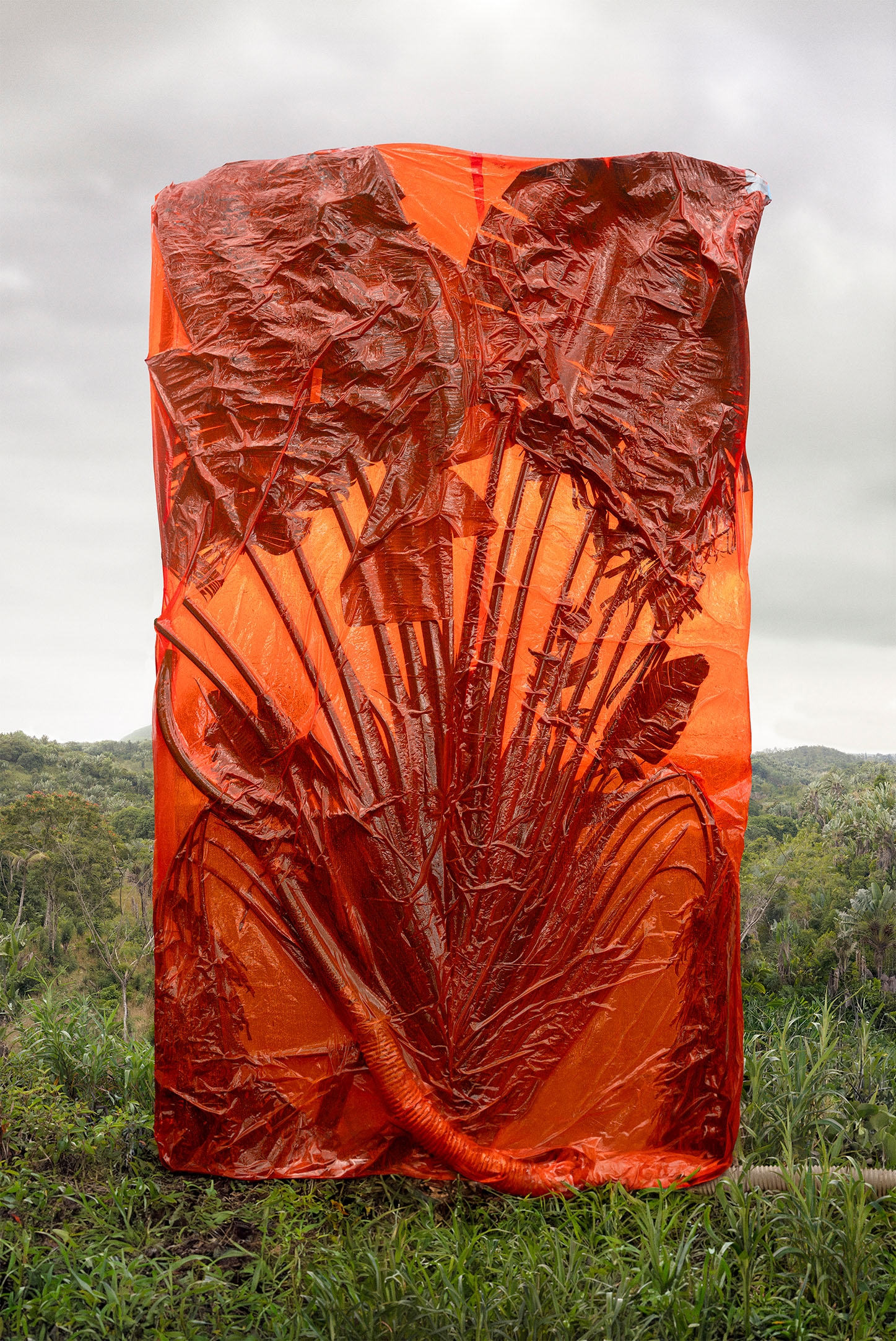
We Were All Naked (Traveller‘s Tree), 2023 | Archival pigment print, 220 x 147 cm
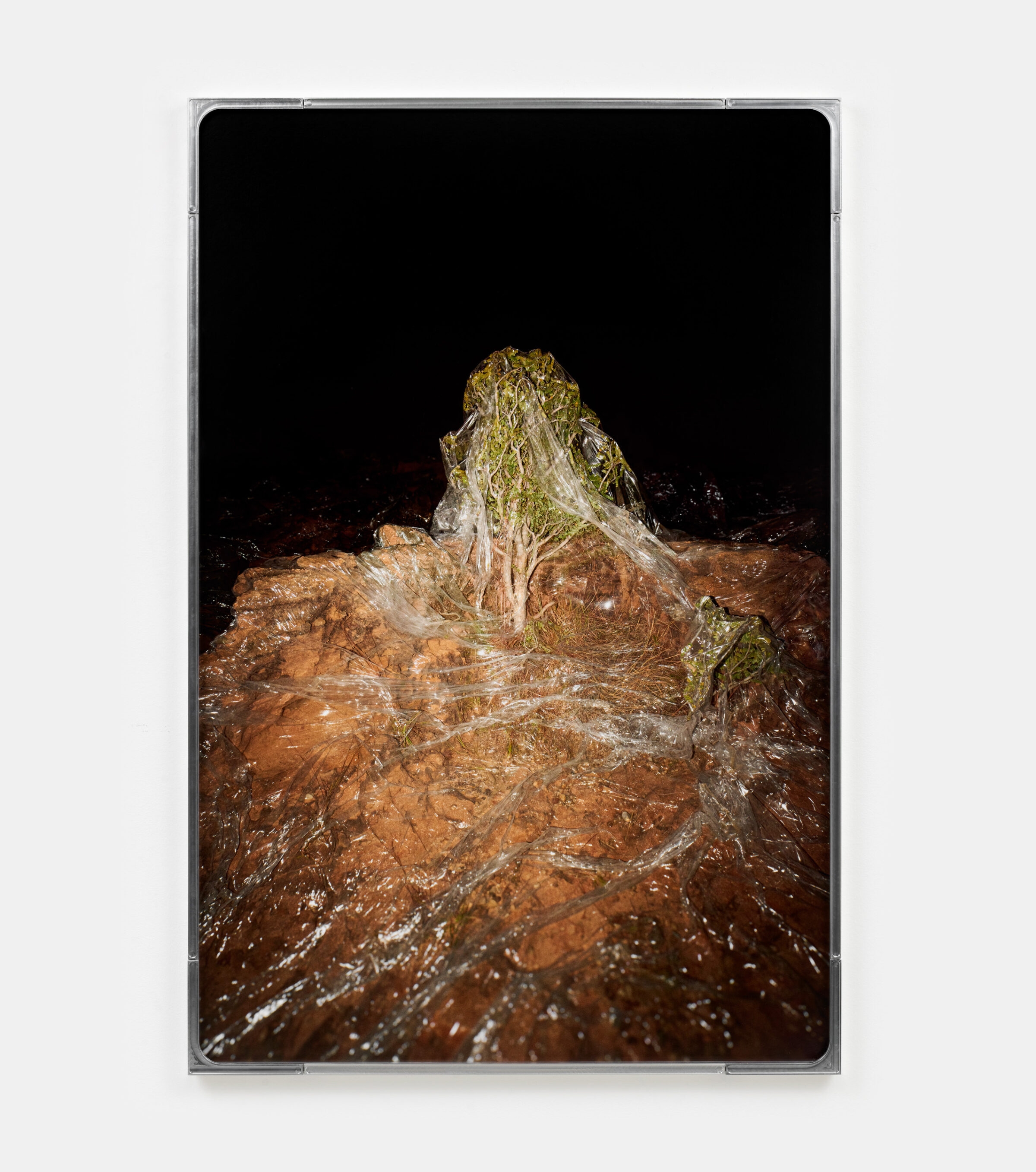
We Were All Naked (Black Monkey-Thorn), 2023 | Archival pigment print, 166 x 110 cm
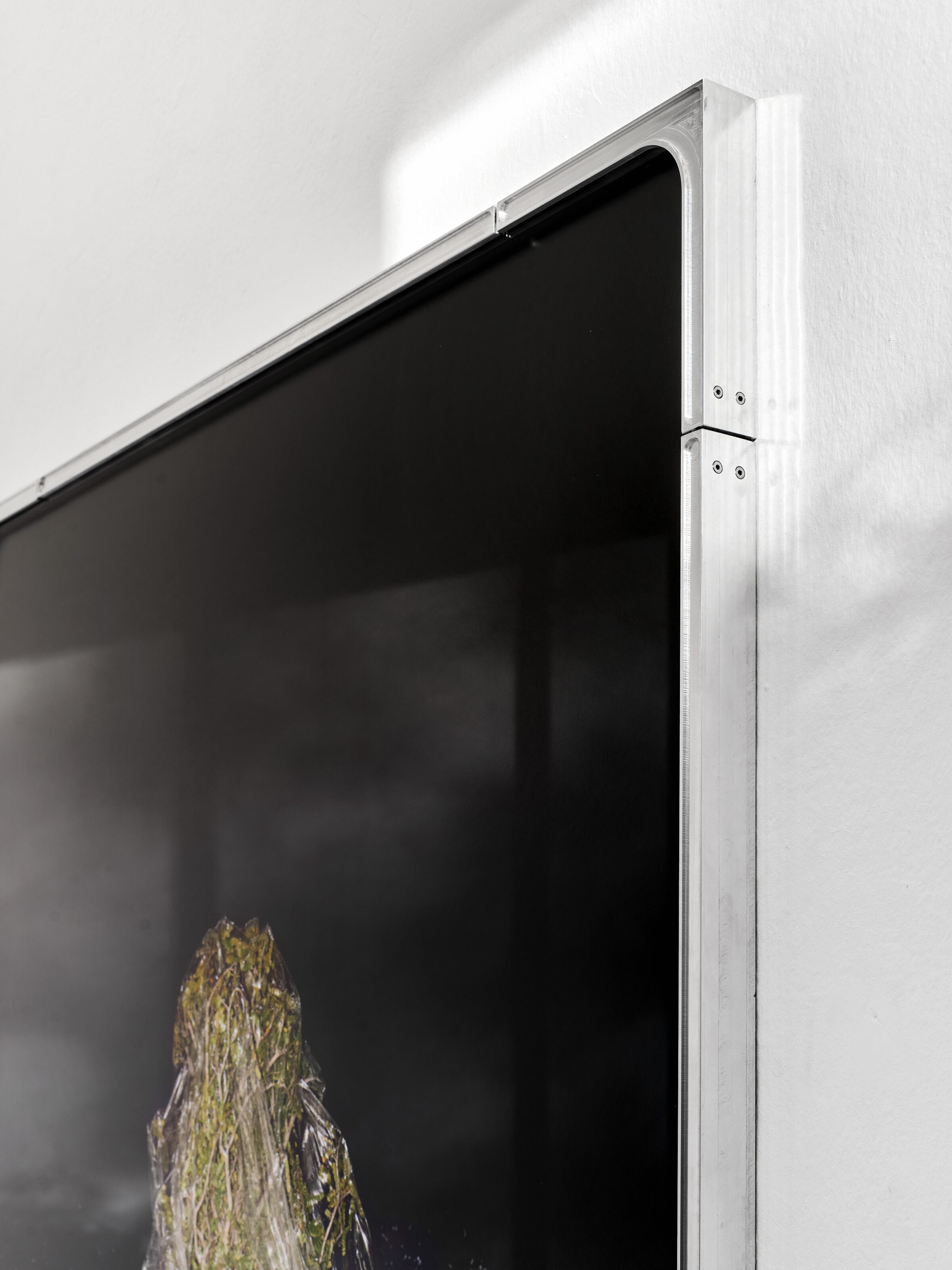
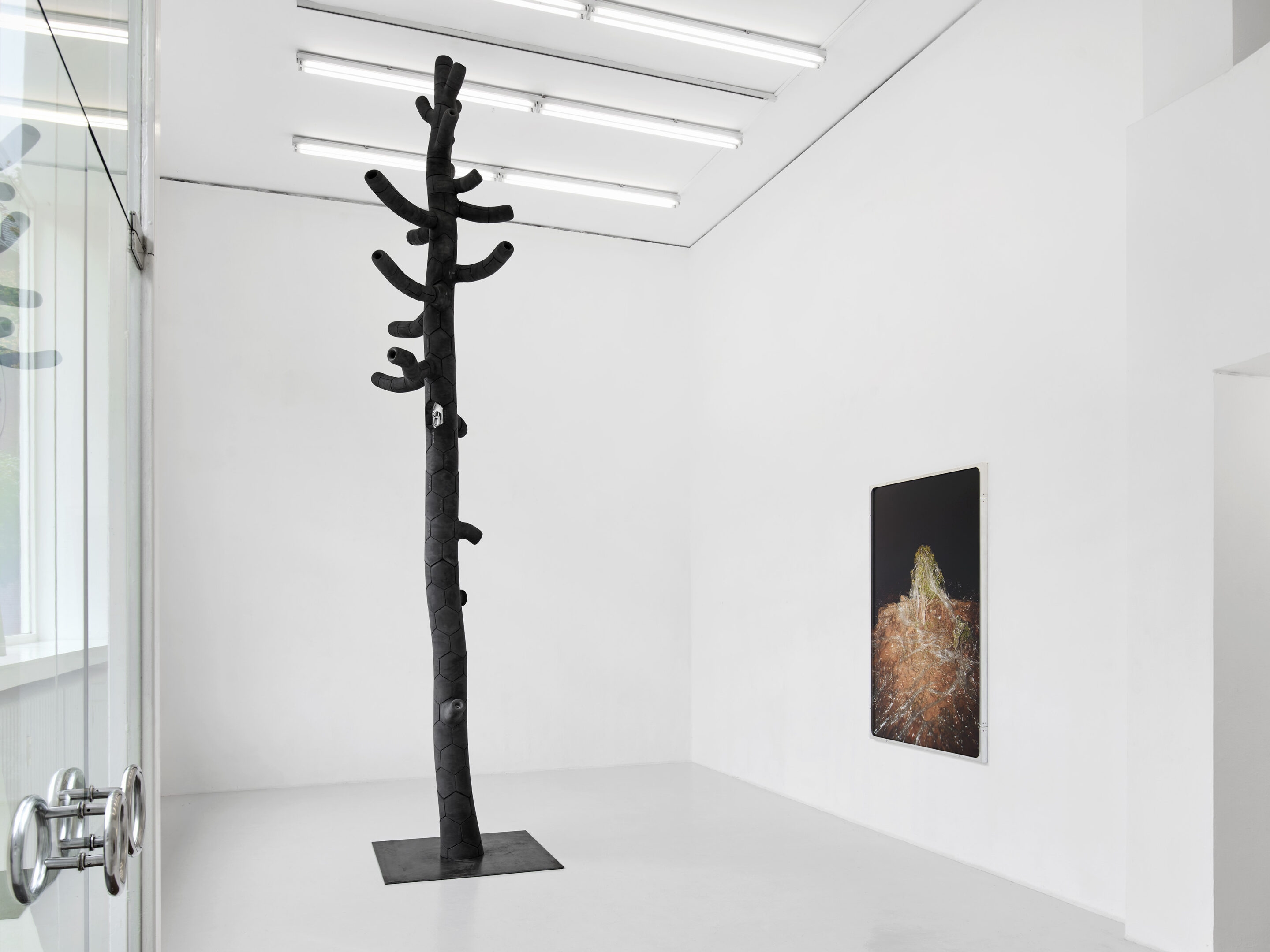
Heat Shield (Old Tjikko), 2021 | ceramics, silicate, aluminum, 485 x 115 cm
The work Heat Shield (2021) also presents a doomed attempt to preserve a natural monument: The tiled tree in the gallery space is a heat shield, a custom-made garment of tiles for the world’s oldest tree, Old Tjikko, which has defied all forces of nature for 9550 years. The protective cover, whose aesthetics are evocative of technically sophisticated heat shields used in the space industry, may protect the tree from vandalism or fire, but it leaves no room inside for survival. Again, the artist tackles human attempts to intervene in systems that we do not fully understand.
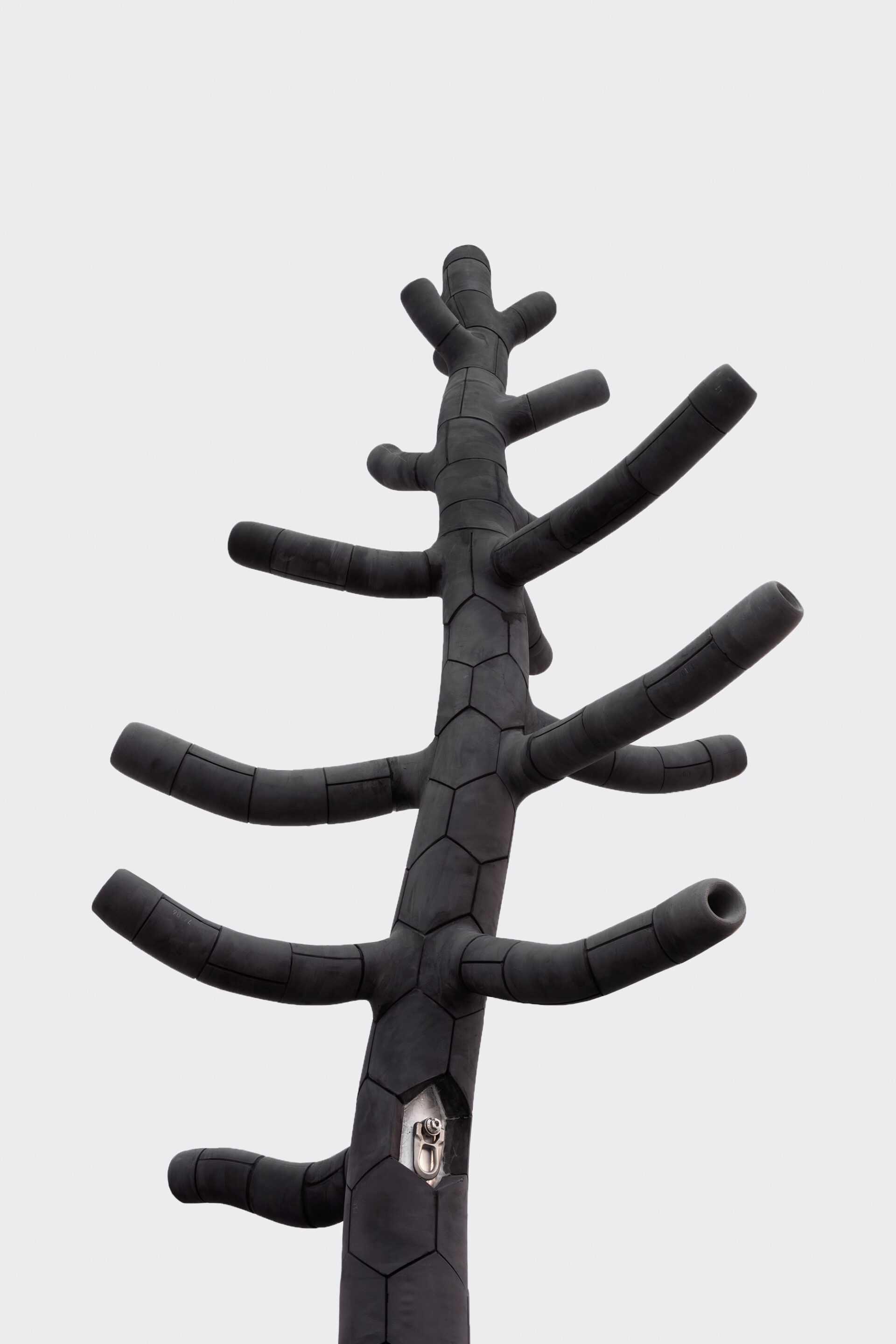
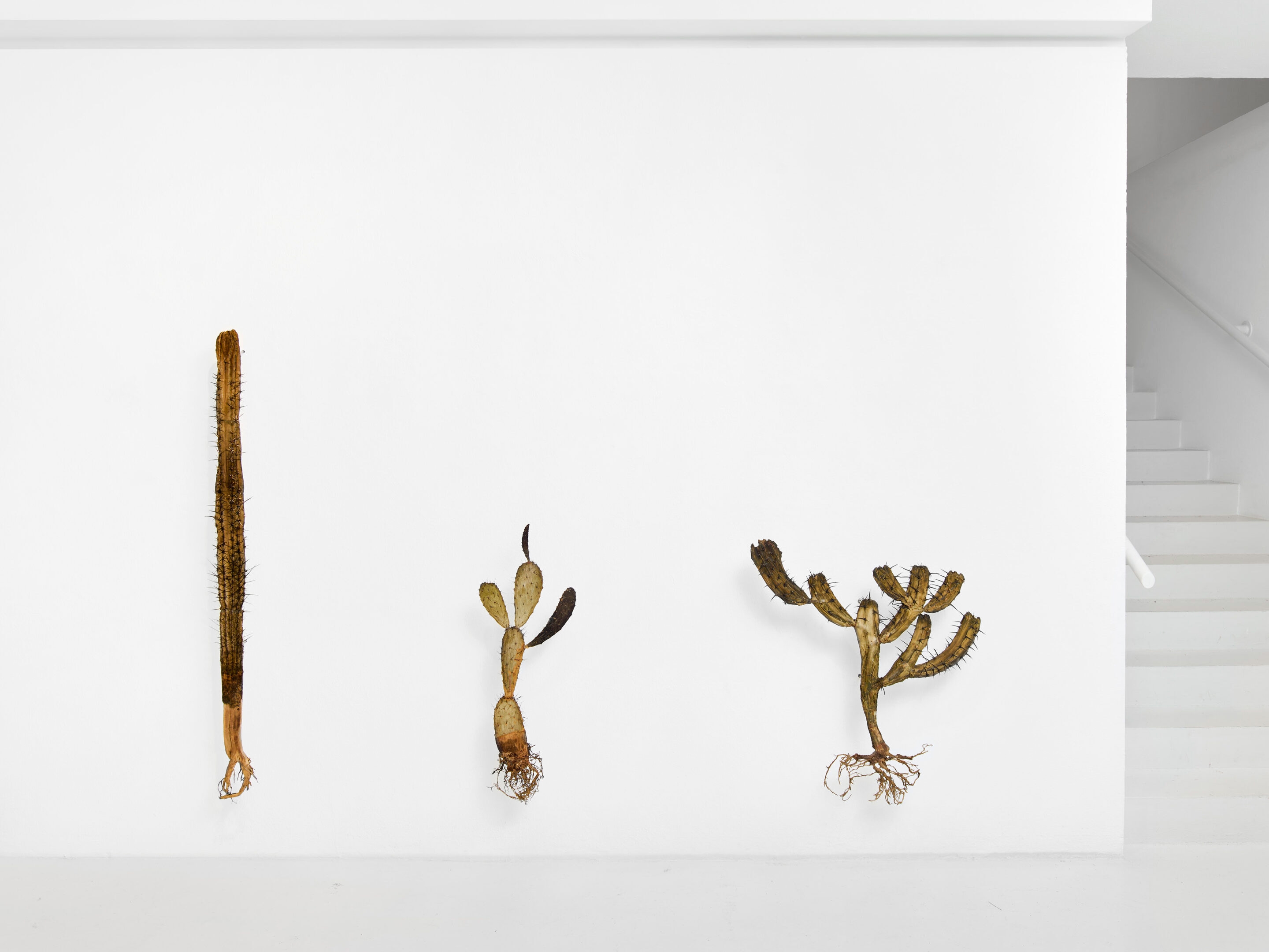
I like the flowers, 2023